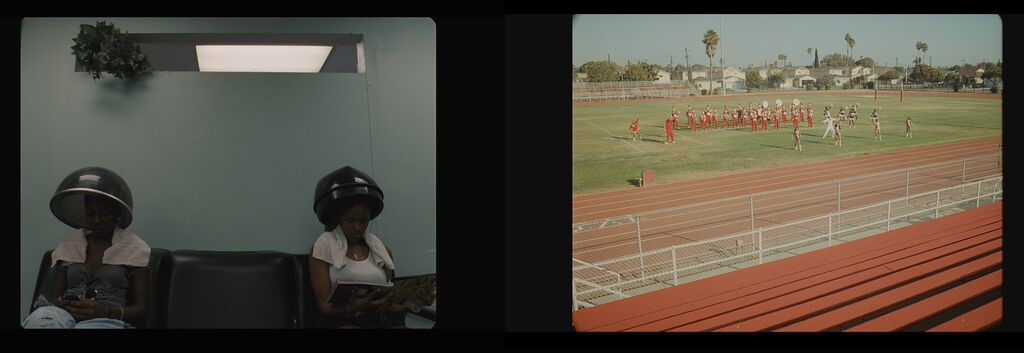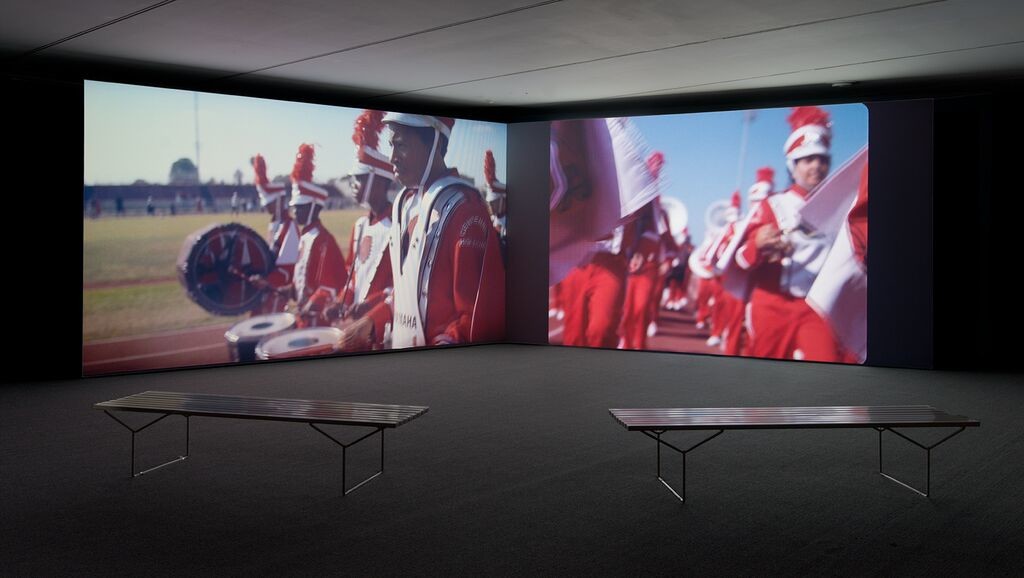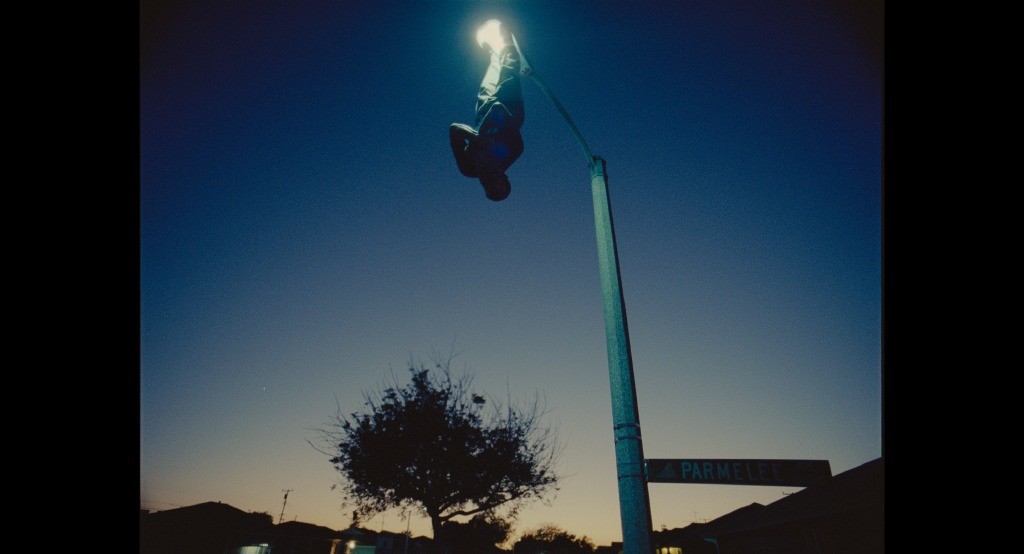Kahlil Joseph: Double Conscience
by Natalie Hegert
Nothing could have prepared me for how beautiful it was.
Kahlil Joseph’s m.A.A.d. is cyclical, looping through climax and denouement like a smooth ride through day and night, light and dark, positive and negative, life and death. With a split screen video installed in an open V in the corner of the gallery, the film glides through various glimpses of the city of Compton, California. At turns languorous, smooth, lush, melancholy, terrifying, and elegiac, the video on view in Kahlil Joseph: Double Conscience at The Museum of Contemporary Art Los Angeles borrows from and subverts hip hop music video tropes: the camera apprehends the city through the windows of an SUV; a digitized Escalade hood ornament spins in the center of the screen; bodies move in slow motion, elevating the banal to a kind of monument to everyday life. It is a potent mix of music video, abstract biography, portrait of a city, and cinematic tour de force.

Some of Kendrick Lamar’s devastating poetry shines through in bursts of music, entering the story like a sympathetic narrator, guiding meaning from these glimpses. Those familiar with Lamar’s 2012 concept album, good kid, m.A.A.d city—with its narrative arc of innocence, corruption, redemption—will derive greater depth of insight from these fragments of sound clips and raps, the musical undercurrent that drives the video along. But Joseph’s cinematic vision of the city of Compton relies less on the content of the lyrics, than it floats along their current, specific storylines repelled by a more general flow of images and scenes. We visit a school, a park, a beauty parlor, a barbershop, a morgue, a store selling fancy hats and beaded dresses for Sunday church services. We see a young man tending to a horse in a dusty, rickety stable; one of those marginal, riverside relics of Southern California’s rural past. We plunge into a swimming pool with a group of teenagers, and the music dampens to a thudding, persistent bass. A man gazes softly into the camera, his face covered with tattoos, tendrils of thick weed smoke curling from his parted lips. A baby lying on his back, facing away from the camera, wistfully taps on his plump belly (can an infant be wistful?).

Chayse Irvin, courtesy of the artist
Suffused with atmosphere, in Joseph’s film the slanting Los Angeles light forms a celestial ceiling over the city, the promise of immortality shining down, glinting through the drive-through display window of a funeral home. Never a cloud in the sky, nothing separating the exposed streets from the heavens. We see the city in twilight just before sunrise, light imminent accentuating the dark that’s still settled over the low-slung angles of rows of rough stucco houses on a Compton cul-de-sac. The camera turns up to the sky, and there’s a man hanging by his feet from a lamppost, arms crossed, poised like a sleeping bat. The impact is immediate but impenetrable. The vampire image recurs again later, hooded figures inverted over the doorway of a liquor store in mid-day, just part of the background, perhaps the souls of lost homeboys lingering while life continues without them. These moments of magical realism form the dark heart of the film, wrenching us out of the literal and into a realm of the imaginary, into a dream realm, a slumbering force just underneath the surface, interrupting an otherwise seamless portrait of Compton and its people as they move steadily through their lives. The split screen lets us see multiple perspectives on the same scene, the juxtaposition never jarring, but for the brief interludes into Kendrick Lamar’s home videos from his childhood; grainy video footage of his family, time-stamped just months before the Los Angeles riots would tear the city apart.

Compton lies on flat land, a grid of streets cut through only with freeways, canals and alleyways. There are no hills or skyscrapers, no higher ground from which to regard the expanse, everything lying on one plane: life and death, pleasure and pain. The only way to regard Compton from above is by helicopter, a perspective we know from news cameras and police surveillance. Joseph appropriates this view to represent the city simultaneously from above and from street level. Boulevards lined with spindly palm trees shooting improbably up a hundred feet into the air seem contained, small. Gazing down at the flat expanse of the city at night, the freeway intersects the gridded streets like a swiftly moving river of light. The moon hangs low, impervious and impassive. But the only stars in the sky over Los Angeles belong to the endless stream of airplanes just beginning their long, slow descent toward the city.
Kahlil Joseph: Double Conscience at The Museum of Contemporary Art Los Angeles runs through August 16, 2015.